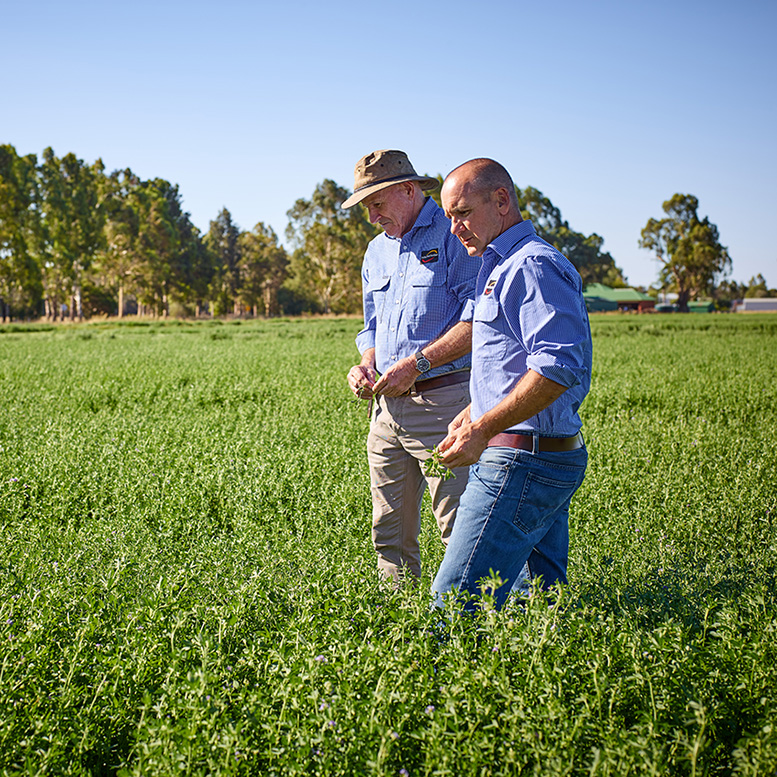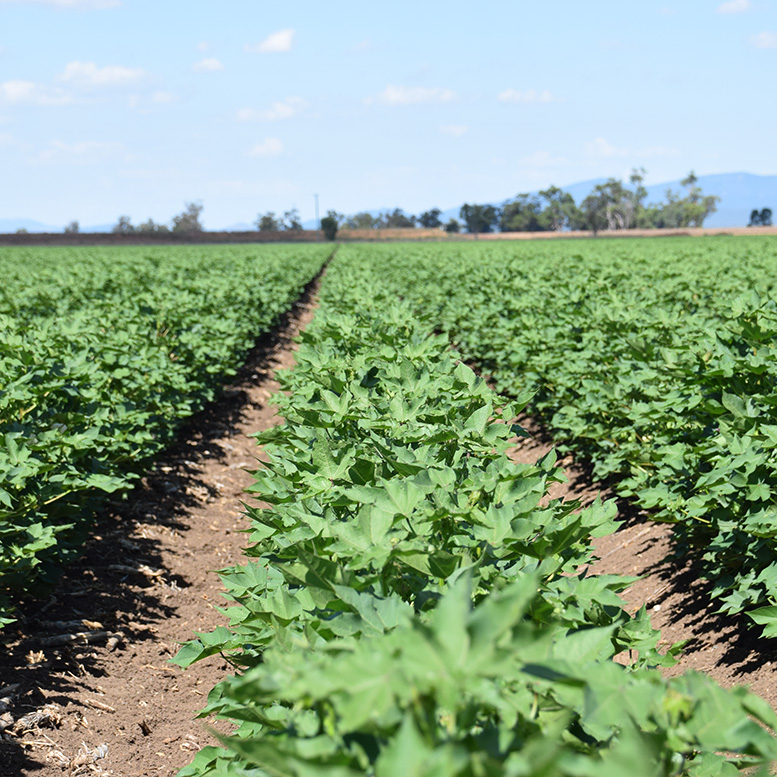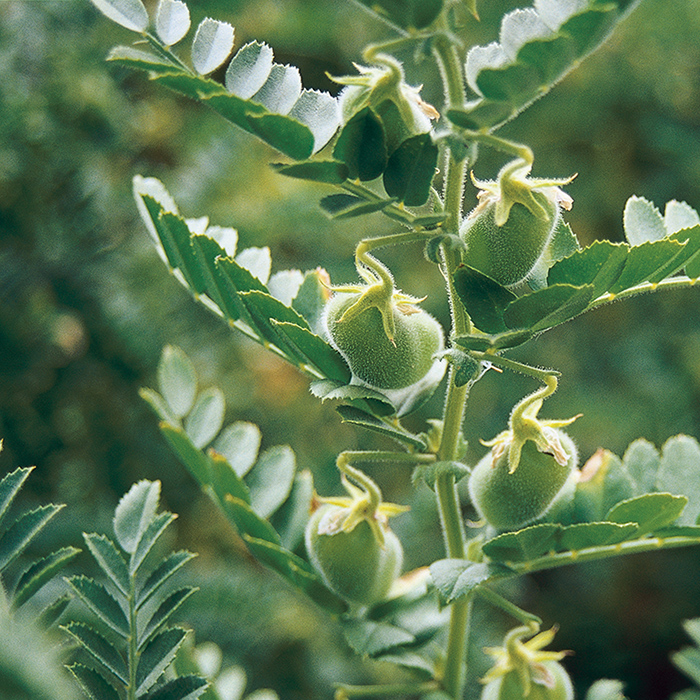Agronomic Insights
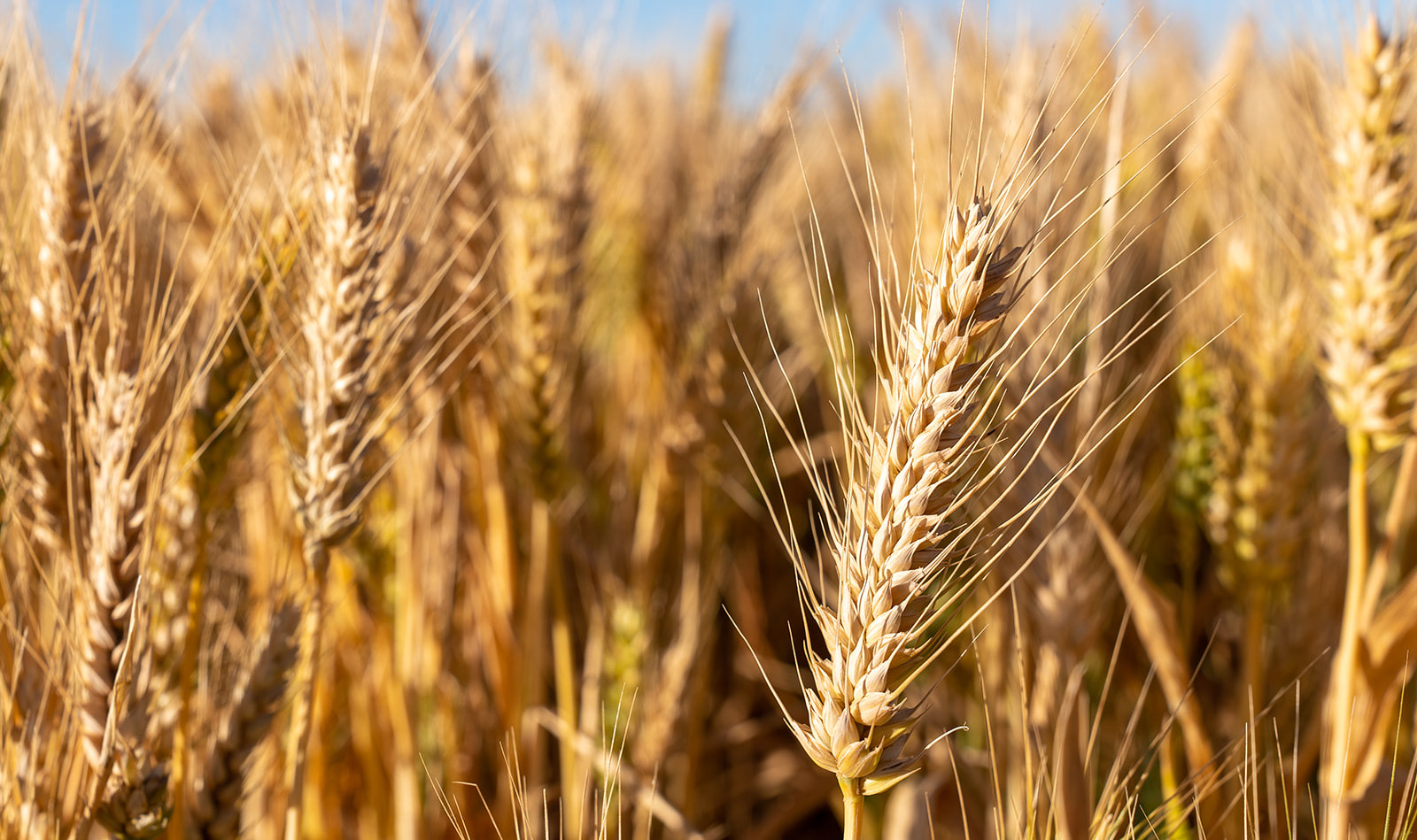
Lee Menhenett – IPF Technical Agronomist
Nitrogen is the most important nutrient in driving yield for winter crops. To maximise moisture conversion to grain yield, crop nitrogen requirements need to be tailored to available and forecast moisture.
“October rains, Big Grains” is often spruiked. It’s true, however, late season rains can also dilute protein, which indicates the crop has run out of nitrogen before running out of moisture. In dryland cropping systems this is a missed opportunity. Table 1 is from a Mallee wheat trial in 2014 and shows the importance of nitrogen in maximising water use efficiency.
Water Use Efficiency
Table 1 – Mallee wheat trial
| kgN/ha | t/ha | kg grain/mm |
| 0 | 2.23 | 17.9 |
| 20 | 2.7 | 21.7 |
| 40 | 2.89 | 23.3 |
| 60 | 3.22 | 25.9 |
| 120 | 3.04 | 24.5 |
The difficulty is that most of the N decisions are made and applied earlier in the season based on stored soil moisture and rainfall forecast outlook. Last year the outlook was for a drier spring and even a super El Nino, which reduced confidence to apply additional N. There was however residual soil moisture from the previous very wet spring and wet June, providing full soil moisture profiles and encouraging growers to match nitrogen to average and above average yield targets.
Yield is derived from the number of heads/m2 (spikes), the number of spikelets/spike (number of grain positions on head), grains/spikelet (number of grains/position – grains wide) and grain weight. Stresses during any of these physiological growth stages can decrease yield. Nitrogen, moisture and temperature stresses are the main culprits in stealing yield.
When budgeting for nitrogen requirements, water use efficiencies multiplied by stored and forecast moisture is used to predict yields. These N budgets are a moveable feast and typically adjusted throughout the growing season as moisture builds or becomes limiting. The one constant in N budgeting is protein. Grain critical protein is referenced to where yield has been maximised, and while this critical protein percentage can vary from 10.5-12.5%, typically critical protein on main season wheat will be around 11-11.5% (APW1 grade). My preference is to target 11.5%, as this allows a buffer for a cooler wetter finish where yield will be less constrained but protein falls back, or in a drier season finish where yield is constrained but protein increases.
Graph 1 is a wheat X nitrogen trial conducted by IPF in Jamestown SA in 2017. The graph illustrates the importance of nitrogen driving yield and how that is reflected in associated protein. Yield was maximised at 150kgN/ha at around 4.5t/ha and 11.5% protein (APW grade). At the lower N rate of 60kgN/ha yield dropped to around 4.1t/ha and 10% protein (ASW grade).
Graph 1 – Wheat Trial Jamestown SA 2017
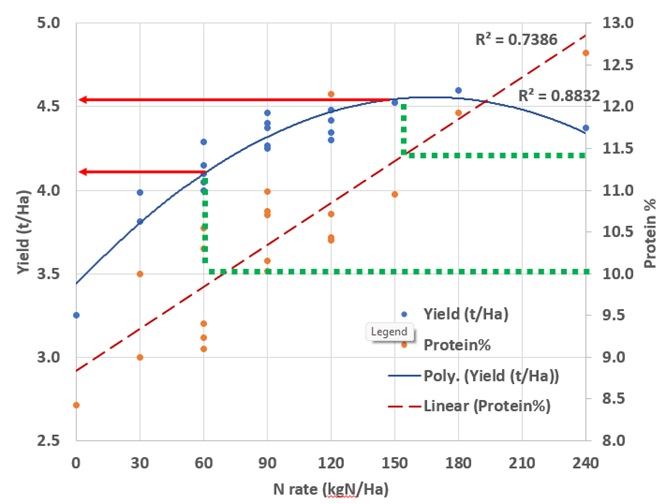
Grain production is directly linked to moisture, so it stands to reason that with the run of good seasons, grain yields have also been excellent. Graph 1 uses data from Australia Crop Forecasters to highlight state and national grain production (in 2023 Nth NSW and WA had poor seasons significantly decreasing grain production). Severe flooding in 2022 took away top end yields in certain districts.
Graph 2 – Winter Crop Estimates 2019-2023
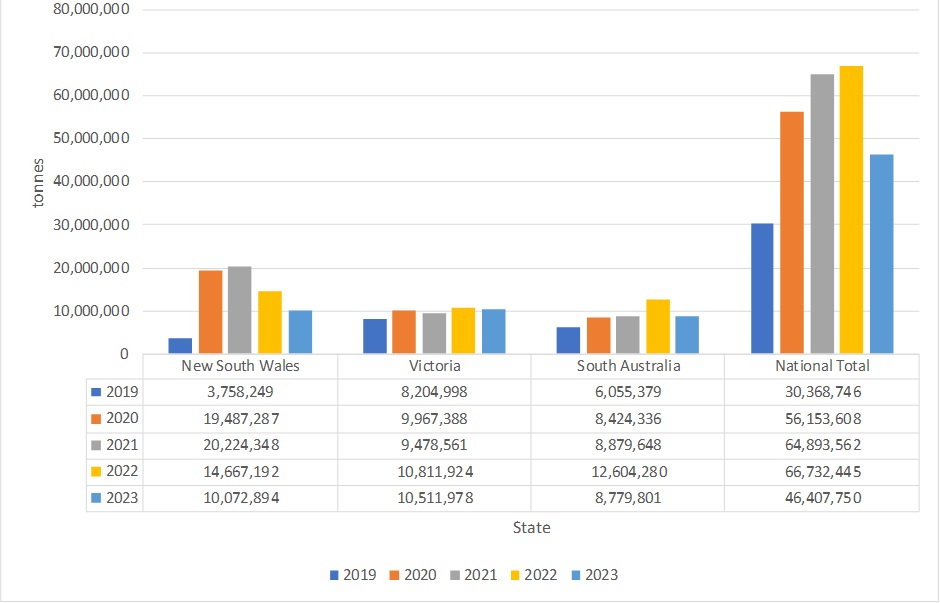
Higher grain yields remove more nutrients from the cropping system, so it would be expected that if there is a duration of higher yielding seasons soil N reserves will fall. Lower protein wheat (ASW) is the obvious and immediate indicator that N supply has been limited.
The only other method available to farmers and agronomists for N budgeting is deep soil sampling. This allows mineral N (and S) levels to be assessed and provides the N credit side of the budgeting equation. Without soil mineral N data the budgeting process becomes guesswork.
Data from the Nutrient Advantage Laboratory 2018-2023 in Graph 3 shows analysis of soil nitrate levels converted to kgN/ha (using soil bulk density of 1.2). Laboratory data is represented as either a segmented sample or a whole 0-60cm sample.
2018 and 2019 were <decile 5 rainfall years in southern Australia leading to lower grain production and nitrogen removal. In the four subsequent years 2020 to 2023, rainfall was average or above average, leading to exceptional yields in most of the regions within the cropping zone of southern Australia. With the run of wetter than average seasons total grain production has also increased (Graph 2) removing nitrogen from the system. Graph 3 reflects this draw down on soil mineral N within each soil depth segment or in the complete 0-60cm depth. Viewing the 0-60cm sample depth, nitrogen has been depleted from highs of 120kg/N/ha in 2020 down to 83kgN/ha, 37kgN/ha or equivalent to 80kg/ha Urea.
Graph 3 – Average soil nitrogen (kgN/ha) soil levels from southern Australia in years 2018 – 2023
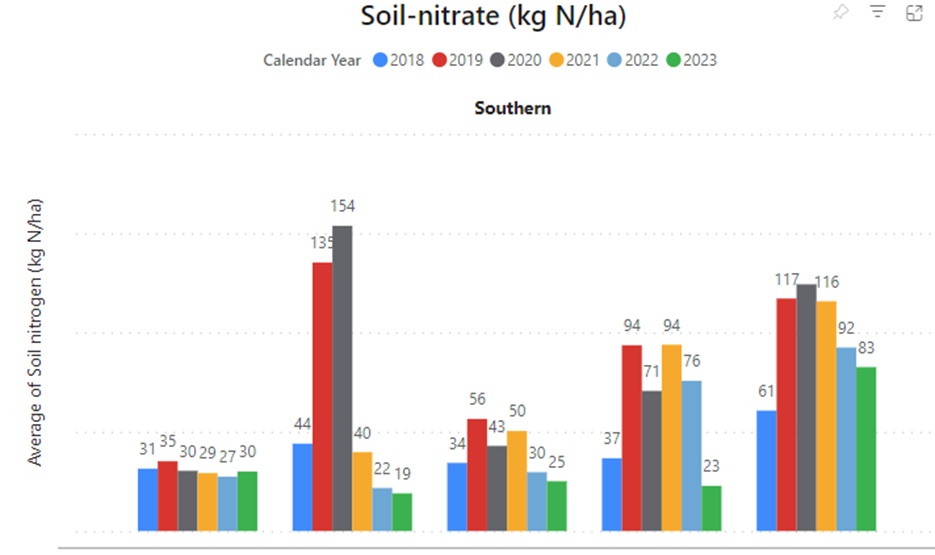
Seasonal confidence in dryland winter cropping systems is primarily driven by stored soil moisture. Growing season rainfall is critical, however can be fickle, therefore confidence in any season is linked to increasing soil moisture levels. Figure 1 shows the Bureau of Meteorology rainfall accumulation totals for Australia from November to January. All of south eastern Australia has received >50mm with large areas receiving over 100mm across numerous rain events. With good summer weed control, at least 30% of these rainfall totals should be stored in the soil. For every 1mm moisture lost through summer weed growth, soil mineral N levels also reduce by 0.56kgN/ha (McMaster and Graham, 2014). Given the frequency of these rainfall events, topsoil moisture has been maintained in warm soils, therefore driving N mineralisation. Soil organic carbon and duration of topsoil moisture will dictate how much N is mineralised.
Figure 1 – Australian accumulated rainfall totals

Given large grain N removal at harvest, and then excellent summer rain accumulating soil moisture and nitrogen through mineralisation, it is recommended to take deep soil samples to evaluate mineral N status, prior to or at sowing.
In summer fallow years with limited summer and autumn rainfall it is recommended to sample as close to topdressing as possible to allow for any mineralisation from sowing to sampling. However, with a wetter summer fallow period, sampling closer to sowing is good practice.
Figure 2 shows the options of sampling as a whole or segmented sample. The benefit of sampling in segments is that the location of N (or S) can be determined and may influence timing of N applications. If N is deeper in the profile, topdressing may need to be earlier, or if there is a disconnect with deeper moisture, the N contained in those segments can be discarded (not accessible by roots). Sampling depth is typically to 60cm, however ideally it should be to the depth plant roots explore.
Figure 2 – Sampling technique to assess soil mineral-nitrogen

Review last season’s yield and protein and organise a robust deep soil sampling program in the autumn. This will provide information on the credit side of the nitrogen (and sulphur) budgets to help establish top dress nitrogen volumes as the season progresses.
References
Australian Crop Forecasters. Winter Crop Estimates
Bureau of Meteorology. Australian Rainfall Decile Ranges
McMaster C and Graham N (2014). Summer weed control reduces moisture and nitrogen losses. NSW DPI. GRDC Update Papers.
Further Information
For more information or advice about crop nitrogen requirements, contact Lee Menhenett on 0412 565 176 or via email lee.menhenett@incitecpivot.com.au
DISCLAIMER
This is a guide only, which we hope you find useful as a general tool. While IPF has taken all reasonable care in the preparation of this guide, it should not be relied on as a substitute for tailored professional advice and IPF accepts no liability in connection with this guide. Incitec Pivot Fertilisers manufactures and sources fertilisers from other suppliers. The fertiliser supply chain extends beyond the company’s direct control, both overseas and within Australia. Incitec Pivot Fertilisers hereby expressly disclaims liability to any person, property or thing in respect of any of the consequences of anything done or omitted to be done by any person in reliance, whether wholly or in part, upon the whole or any part of the contents of this article.



